You've been out of the game for quite a while. The last thing you remember dealing with is having your entire hand looped out due to Crush Card Virus and losing to Dark Armed Dragon beatdown. You were glad when CCV was banned, but still felt that it was time for you to leave.
When you heard that it came back off the banlist, you were surprised. How can a card so powerful come off the list all willy-nilly? But what was even more surprising to you is that absolutely no one played the card anymore.
What gives?
Introduction
In one of my previous articles, I discussed how erratas work in general, and what purpose they may serve. For this article, I will be specifically talking about cards that received an errata that added an restriction or condition of some sort that caused the card to fall out of favor. I will compare their previous and current effects, and try to explain why they may not work as well as they used to. I will also explain whether I agree with the errata, or if it is unnecessary.
Note: I will not be going over all cards that have received an errata like this (examples being Imperial Order and Rescue Cat). Players still use (or used) those cards in the competitive scene.
Should've Been a Trebuchet
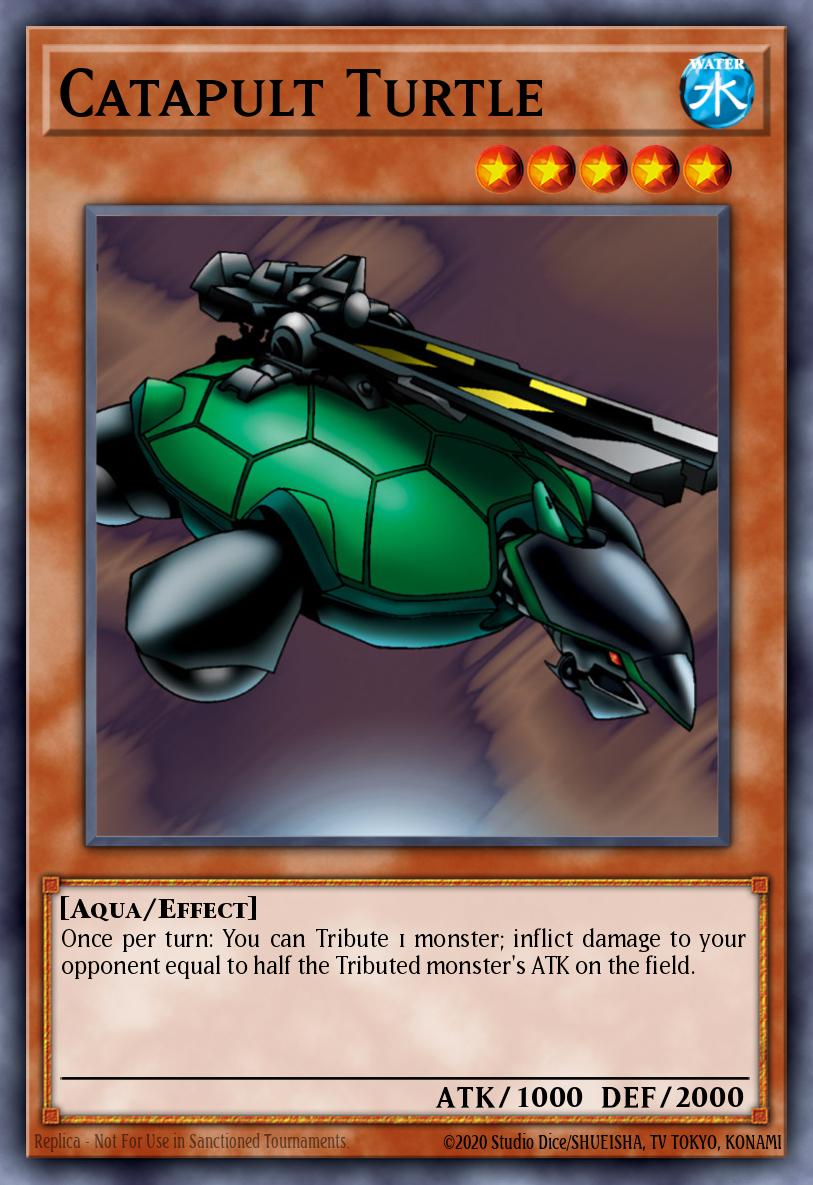
Catapult Turtle is a lvl 5 monster with 1000 ATK (this is important). While on the field, you can tribute a monster to inflict damage to your opponent equal to half of that monster's ATK. You can only use this effect once per turn while Catapult Turtle is on the field.
If you find a way to loop this card, it's possible to use this effect over and over again, burning the opponent out of a fair chunk of their LP. Finding a way to summon it repeatedly onto the field is hard, however.
Pre-Errata
Prior to its errata in Duelist League 18, this effect had no OPT clause on it. If you had a way to Special Summon monsters indefinitely, it was possible to use its effect infinitely.
This card was popular in an FTK that utilized Magical Scientist. Using a card like Last Will helped you get out either one of these two monsters. Then, by summoning Fusion Monsters and "launching" them with Turtle, you can burn the opponent for at least 8000 damage.
In this case, I agree with the errata, because it helps limit FTKs.
A Not-So-Sinister Serpent
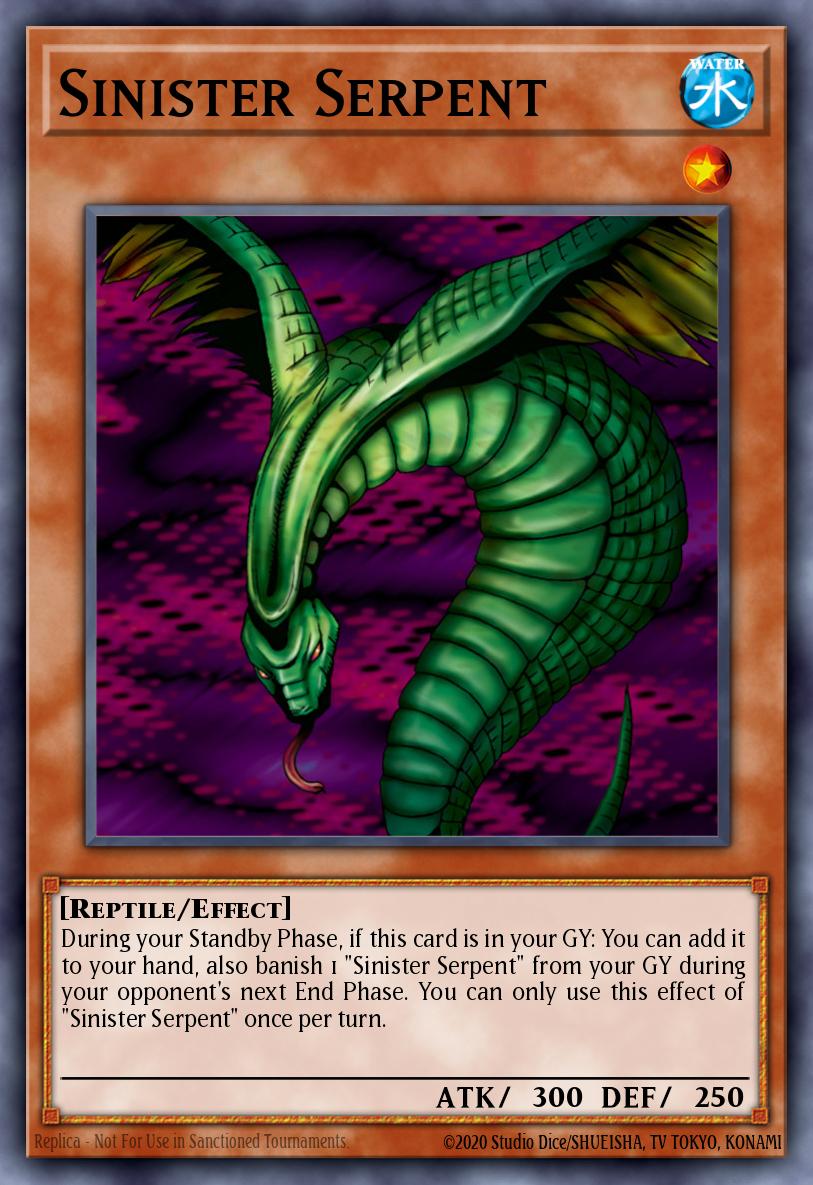
Sinister Serpent is a lvl 1 WATER Reptile that, during your Standby Phase, allows you to add it from the GY to your hand. During the opponent's next End Phase, you need to banish a "Sinister Serpent" from the GY.
With the way the card works, it means that you can use this card a total of once. This is especially relevant if you use it as intended, which is for paying costs. Since you would usually have this card in the GY at the end of your turn, it would more than likely be banished.
This card was extremely popular during Goat Format. It helped provide materials for Metamorphosis and Tribe-Infecting Virus, among other things.
Pre-Errata
Prior to its errata in Premium Gold: Return of the Bling, Sinister Serpent did not have the clause requiring that you banish a copy of it if you return it to the hand. Because of this, it meant that it would be able to act as infinite material for the cards mentioned above. It could also help block one attack per turn to try and draw into better cards.
With this in mind, I do not necessarily think that it should be banned. There are some cards that can easily deal with this recursion (Called by the Grave, D.D. Crow). Not only that, but no one would realistically play this card in their decks to help pay costs, since it only comes back during your next Standby Phase.
The Smallest Temple
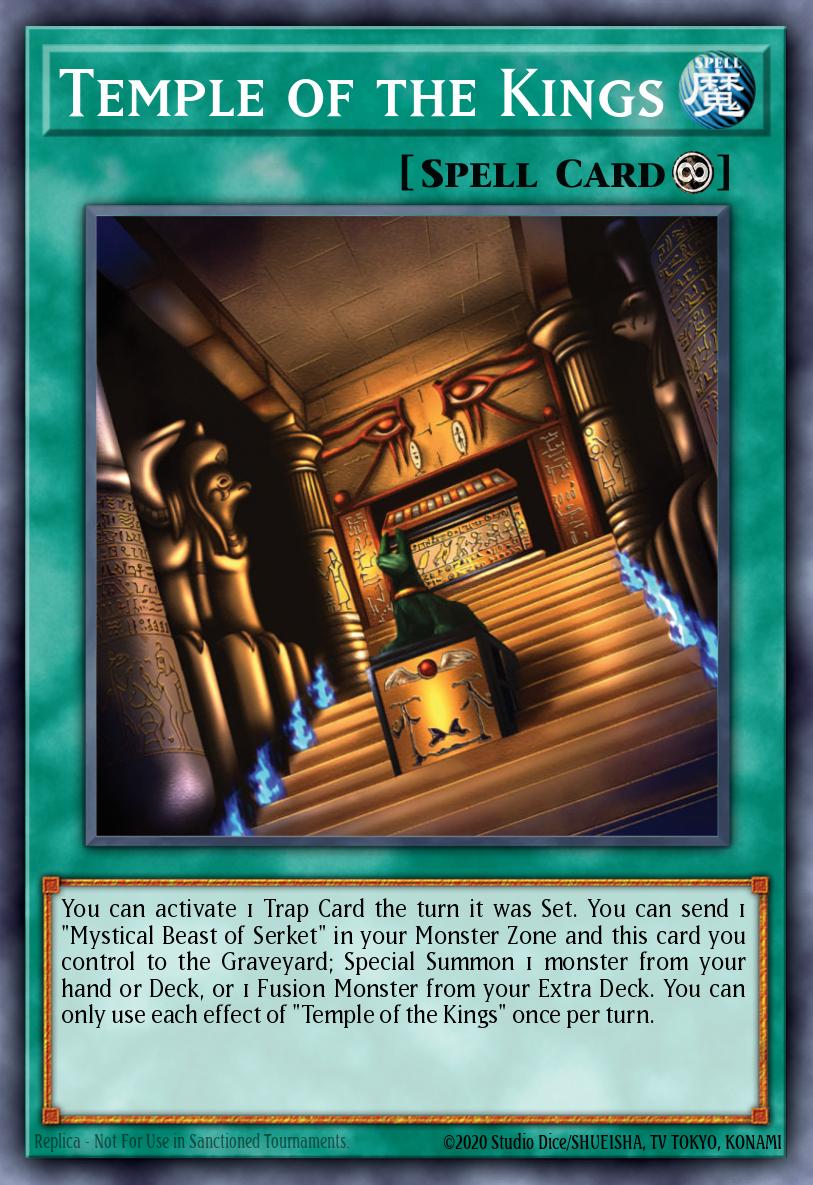
Temple of the Kings is a Continuous Spell that allows you to activate one Trap Card the turn it is set. If you control Mystical Beast of Serket, you can send both that monster and this spell to Special Summon one monster from the hand or Deck, or a Fusion Monster from the Extra Deck. Each of these effects have a "hard" once-per-turn clause on them.
As most of you may know, being able to activate traps the turn they are set is pretty good. In many cases, it can lead to FTKs which is exactly what this card was used with. Players usually utilized this card in Exodia decks. With this card on the field, Reckless Greed becomes Pot of Greed, and a whole host of other draw cards made the deck quite consistent.
But how does that work if you can only activate one trap per turn?
Pre-Errata
Prior to its errata in PGL2, there was no limit to the number of Trap Cards that can be activated. Not only that, but there was no limit to the number of monsters you can summon with the Beast, granted you have a way to loop the two cards.
Obviously, this card needed an errata. Before its release, there was a similar Monster card - Makyura the Destructor - that allowed you to activate Traps directly from the hand. Both of these cards deserved the ban, because there are traps that are extremely powerful. Again, these could also lead to FTKs.
Konami is an Effective Vaccine
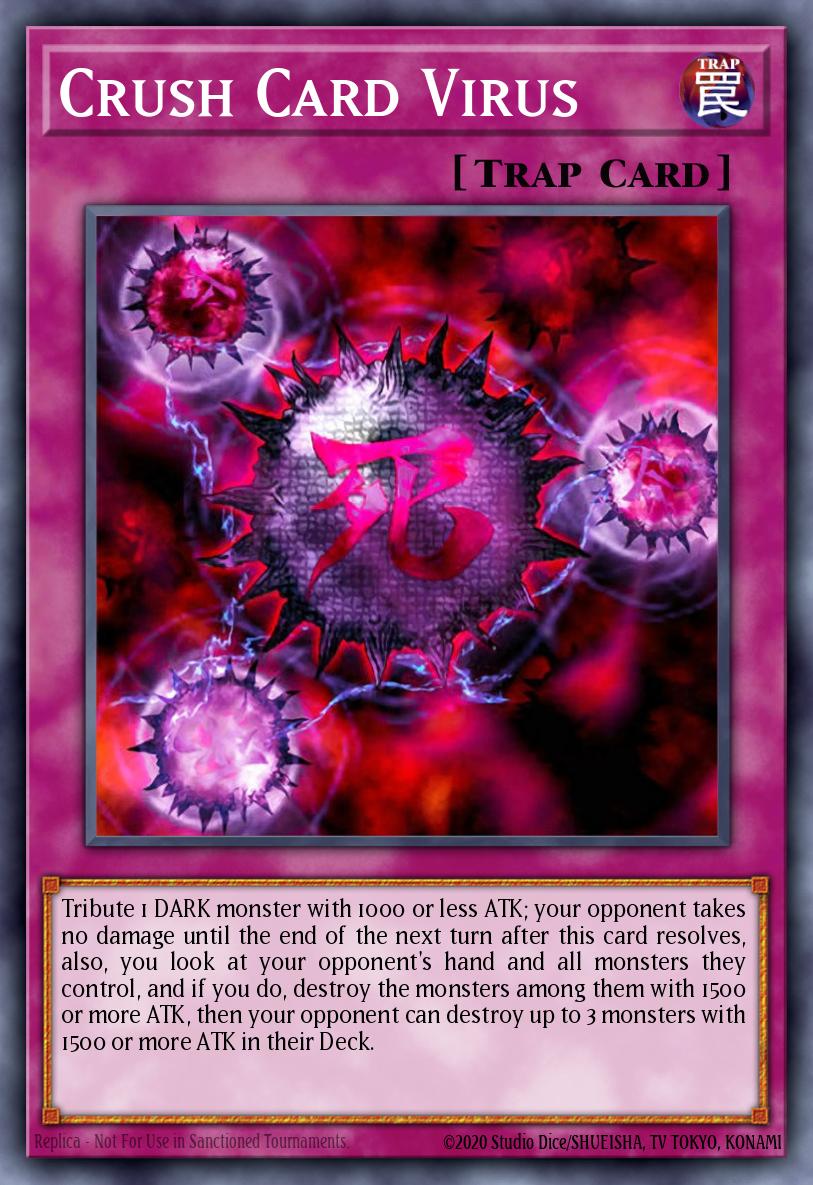
Crush Card Virus is a Trap card that, by tributing a monster with 1000 ATK or less, allows you to look at your opponent's hand and destroy all monsters they have with 1500 or more ATK. Then, they can destroy 3 monsters with 1500 or more ATK from their deck. They take no further damage until the end of the next turn.
With an effect that seems so lackluster, it may seem surprising to a few newer players that this card used to be banned. During the time that it was widely used, it had great reason to be banned.
One of the decks that most popularly used it was Tele-DaD. If you managed to open this card as well as a target, it was possible to win games against the opponent. However, due to the fact that the only way to receive it was through a YCS win, it wasn't available to the general public for a while. Konami banned it on the September 2009 banlist.
Pre-Errata
Prior to its errata in PGL2, CCV worked like any other virus card: the tribute and destroy from hand effects were the same as the current errata. However, you were able to look at all cards your opponent draws for the next 3 turns and destroy the monsters with 1500 or more ATK.
When the card came back on the April 2015 banlist, it had already received its errata in PGL2.
The most recent errata of this card most likely prevents players from using the card today. As I have discussed in previous articles, many decks today rely greatly on GY effects. This card allows the opponent to basically use Foolish Burial 3 times. The fact that they will not take any more damage for the next 2 turns is just icing on the cake.
I feel that this card had the opportunity to come back with its original text.
No More Synchronized Burns
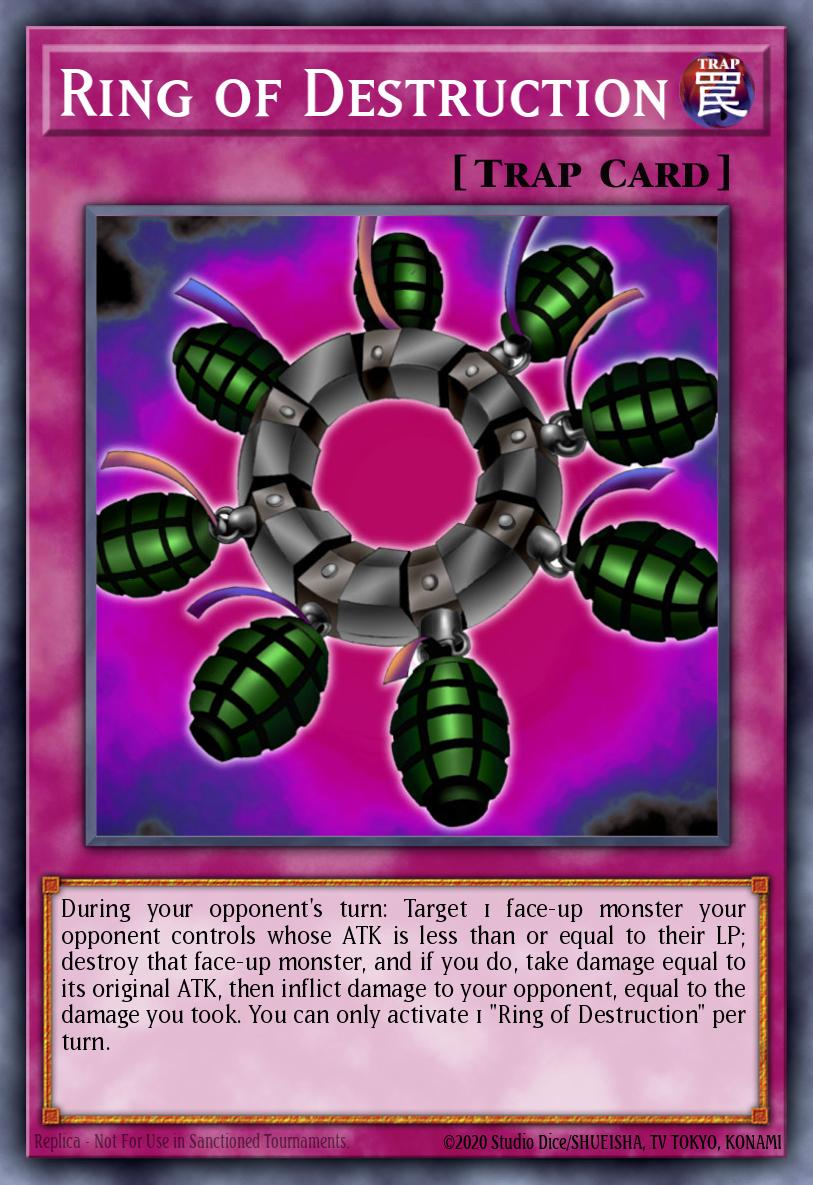 Ring of Destruction is a Trap Card that allows you to target a monster your opponent controls that has ATK less than or equal to their LP. You destroy it, burn yourself for its ATK, then burn the opponent for the same damage. You can only activate it during the opponent's turn.
Ring of Destruction is a Trap Card that allows you to target a monster your opponent controls that has ATK less than or equal to their LP. You destroy it, burn yourself for its ATK, then burn the opponent for the same damage. You can only activate it during the opponent's turn.
While a few burn decks here and there utilized this card (especially Chain Burn), it is nowhere near as widely used today. This card was extremely popular during Goat Format. It helped provide a quick push for game; tributing off your Black Luster Soldier - Envoy of the Beginning for 3000 damage is pretty good.
Pre-Errata
Prior to the errata in PGL2, the card could be activated during either player's turn. Not only that, you had no restriction on the monster you can choose. You can target your own monster and not have to worry about how much attack it has. This was the main reason it was so popular in Goat Format; you can make a tactical self-destruction to win the game.
I agree with Konami's errata. Prior to it, it was possible to end the game in a draw because of the fact that it burned both players simultaneously. With this errata in place, it makes it so that in the event that you and your opponent have the same LP, you would lose LP first, losing the duel.
If there is one thing that both players and Konami hate, it is ending games with a draw.
Dark Magician of No Chaos
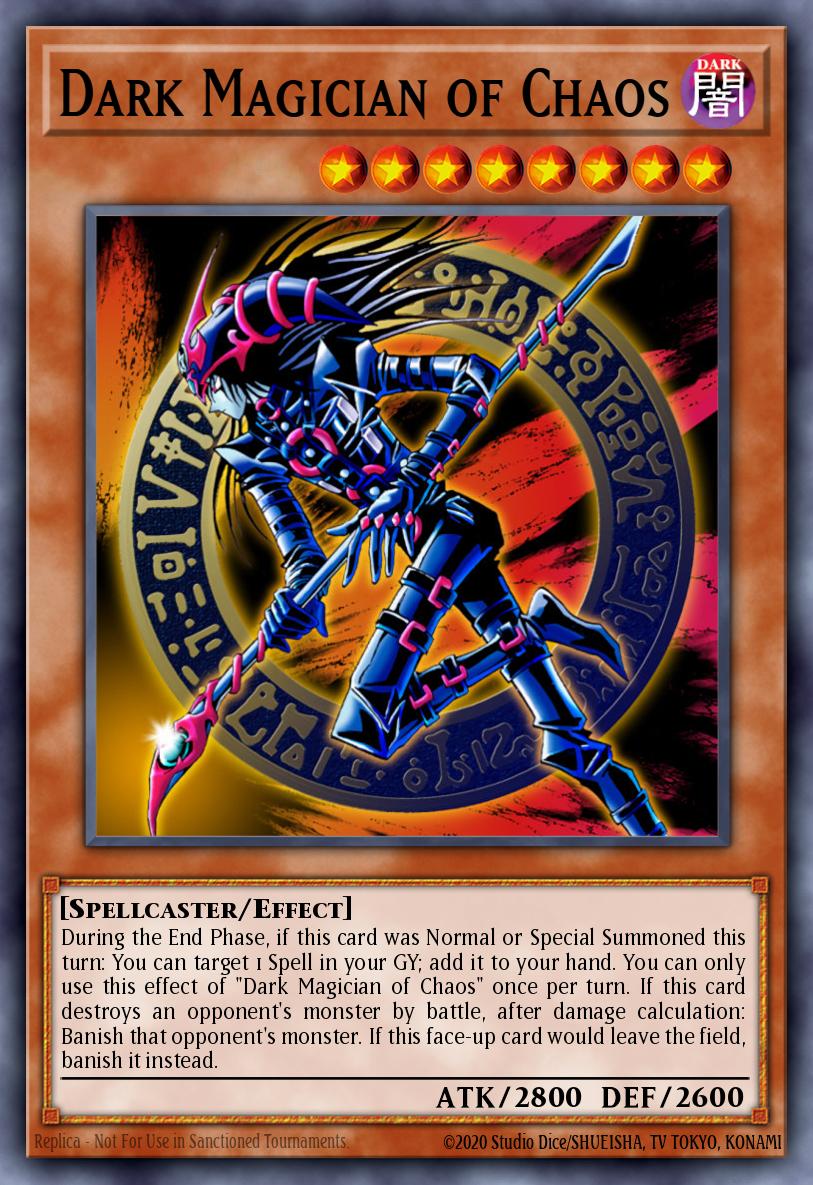
Dark Magician of Chaos is a lvl 8 monster that, if Normal or Special Summoned, adds a Spell Card from the GY to the hand during the End Phase. If it destroys a monster by battle, that monster is banished. If DMoC would leave the field, it gets banished instead.
This card was very popular in a few FTKs in the past. One specific combo involved our favorite burn card: Cannon Soldier. By tributing DMoC (which gets banished), then finding a way to Special Summon DMoC continuously, it was possible to infinitely burn the opponent.
But if you can only add back one Spell Card during the end of the turn, how does it work?
Pre-Errata
Prior to its errata in Yugi's Legendary Decks, you could add back a Spell from the GY whenever you summoned DMoC. The main FTK combo described above included two other cards, the first being Dimension Fusion.
By paying 2000 LP, you can Special Summon as many of your banished monsters as possible. Thus, with the DMoC banished due to Cannon Soldier, you can Special Summon it back, then DMoC will add back the Dimension Fusion. In order to avoid paying the 2000 LP activation cost, you also needed Spell Economics, which allows you to activate Spell cards without paying LP costs.
I feel that DMoC needed the errata. There are ways of easily summoning it from the banished zone today.
Control of Few Brains
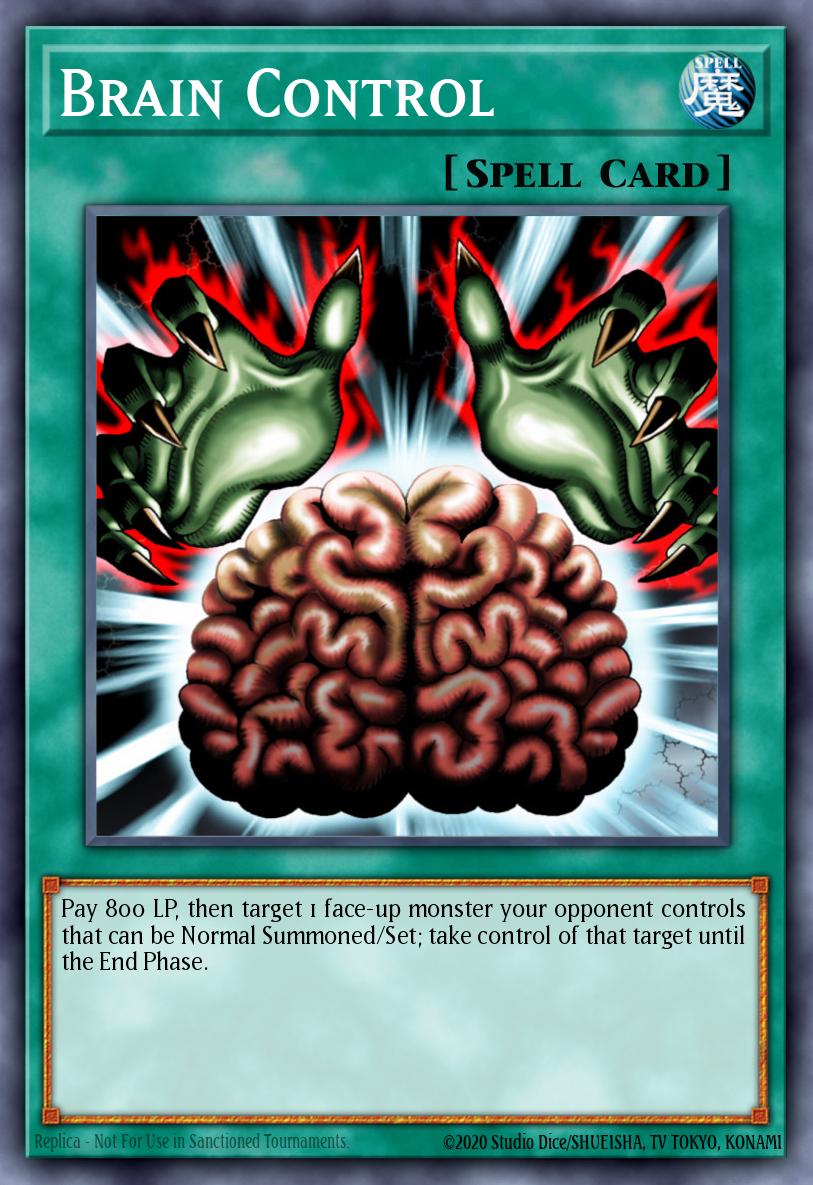
Brain Control is a classic card that allows you to take control of an opponent's face-up monster by paying 800 LP. The monster you target must be one that can be Normal Summoned or set.
Unlike Mind Control, which was released after this card was banned, you are able to use the monster however you want under Brain Control. You can even attack with that monster!
This card was a popular staple, as it allowed you to steal monsters that your opponent worked hard to bring out and use it against them. At least, those that are not summoned from the Extra Deck.
Pre-Errata
Prior to its errata in Duelist Saga, there was no restriction on the monster you can target. The fact that the monster you target needs to be one that can be Normal Summoned makes it obsolete today. There are very few decks that have a boss monster that can be Normal Summoned; most have end boards that are almost completely made up of monsters Special Summoned from the Extra Deck.
Although I do not think this errata needed to be done, I understand why. We already have Mind Control and, with MR4 being a thing, it does not matter that we cannot attack with or Tribute the monster taken. Having Brain Control in the game as well would be a bit too much for the metagame.
Fusion Summoning Too Far Into the Future
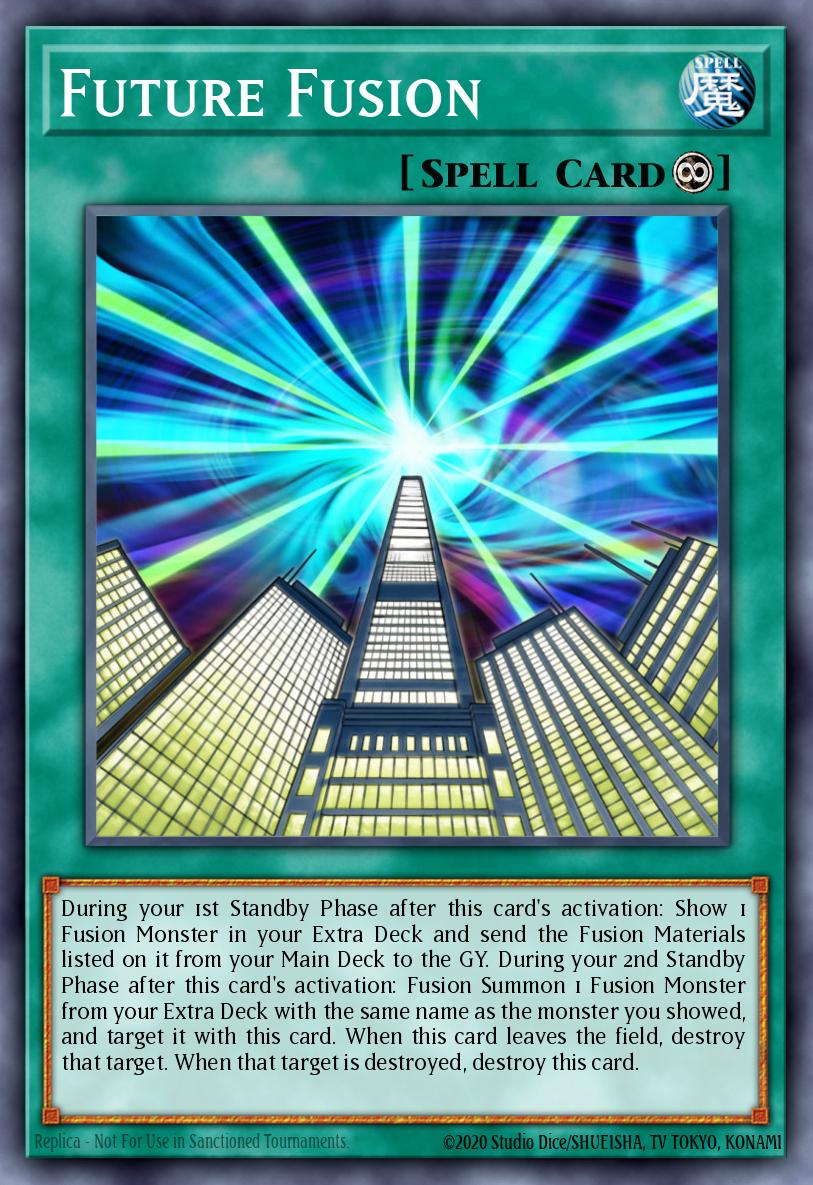
Future Fusion is a Continuous Spell that has an effect spread out over 3 turns. During the first Standby Phase after activated, you can reveal a Fusion Monster from the Extra Deck and send materials from the deck to the GY. During the next Standby Phase, you can Fusion Summon that monster and equip Future Fusion to it. If either the monster or this card leave the field, the other is destroyed.
A popular deck that utilized this card back before it was first banned was Machine fusion. By using this card, it was possible to dump materials into the GY to use with Overload Fusion.
Even after it received this errata, Infernoids tended to use this card. Infernoid Tierra is a powerful Fusion Monster. It allowed you to send all Infernoid monsters in your deck to the GY with Future Fusion.
Pre-Errata
Prior to its errata reprint in DUSA, Future Fusion was able to send the materials to the GY immediately upon activation. It is for this reason, I feel, that Konami felt that it was necessary to change the card in some way before bringing it back. Machine decks would become too powerful because they can send their materials directly to the GY. Infernoids would be greatly boosted, as they require monsters in the GY to function properly.
In this case, I agree with Konami's change to the card. It limits its power, but if it resolves, you most likely win the duel. It is up to the player to keep the card on the field long enough to work.
Guardian of Earth Monsters
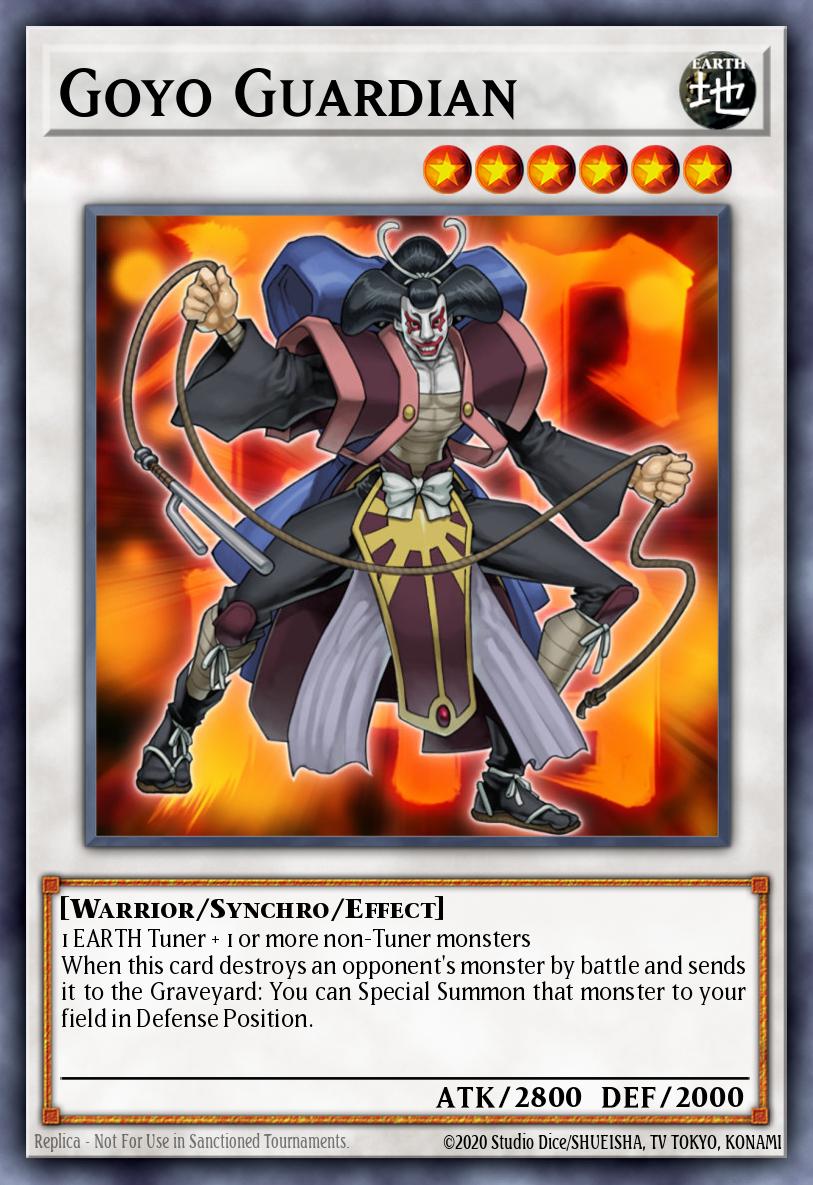
By far the most useless errata on a monster is that of Goyo Guardian. I won't bother with having this section in the same style as the previous ones due to sheer indignation at the injustice.
Goyo Guardian is a lvl 6 Synchro monster that, prior to its errata in DUSA, was generic; you can use any tuner and non-tuner monsters to summon it. Many players used this card in older decks, especially during Synchro-heavy formats. If you destroy a monster by battle and send it to the GY, you can Special Summon that monster to your field, potentially to use as Synchro material.
In most other decks, this was an interesting tech choice to have in the Extra deck. In fact, this card was considered to be so powerful that Konami banned it on the March 2011 list. It was released again a few years later on July 2014.
Unfortunately, Konami was not done with it. Despite the fact that not many decks were using it around DUSA's release, it received a one-word errata that destroyed its usage.
It now requires an EARTH tuner.
This errata was wholly unnecessary in my opinion. The other cards in this article needed one badly in order for them to return to the game, or to help limit their power. Goyo had little to no usage anyway after it was released from the banlist.
Conclusion
As Yugioh keeps growing, erratas are necessary. As I have explained before, Konami does erratas for a number of reasons. The most important reason is to update card text to follow the Problem-Solving Card Text (PSCT) rules of today. After that, they can errata cards to provide Quality of Life improvements (shortening phrases), change names, fix mistakes, or, in some cases, change the way a card works.
This last point is something that it a hotly debated idea. Some feel that cards do not need to have an errata that changes their activation costs or effects, because they feel it messes with the "identity" of the original card. Others feel that these changes are needed so that those cards can come back into the game.
I do not go towards either side, necessarily. However, as described above, there are examples where Konami goes too far in these changes. This results in cards we love being irreversibly changed for the worse.




